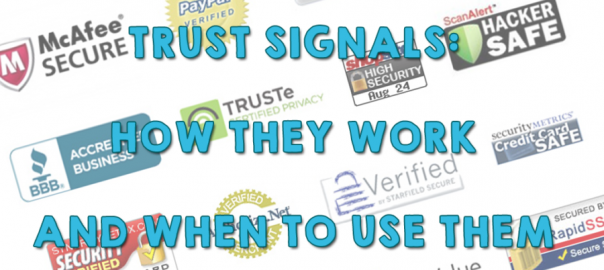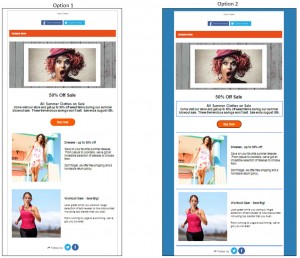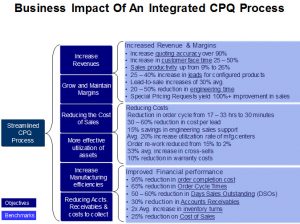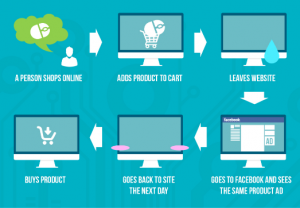It cannot be bought, forced, or demanded. You can have it, but not hold it. It can take years to gain, and can be lost in seconds – and it’s the single most important element of any transaction or relationship.
What am I talking about?
Trust.

Although technology and shifts in how we do business has made it easier to buy and sell without fear of being ripped off (or offer some sort of recourse in the event you are), most transactions we engage in every day are based primarily on trust.
Many websites and ecommerce retailers use trust signals to put prospective customers at ease, but what are trust signals? How do they work? What makes them so effective? And – perhaps most importantly – how and when should you use them?
These are all questions we’ll be answering in today’s post.
What Are Trust Signals?
Trust signals are elements that are often displayed on websites and at physical points-of-sale in brick-and-mortar businesses to help customers feel more secure in their decision to patronize a specific business or buy a specific product or service.

Some trust signals are little more than logos that offer reassurances that a retailer or site belongs to a certain trade organization, whereas others are proof of a business’ conduct or trustworthiness. Trust signals can and do vary widely in form, but they all perform the same function – making prospective customers feel better about doing business with a company. As such, trust signals are an element of conversion rate optimization.
What Are Some Different Types of Trust Signals?
Some trust signals are instantly recognizable, whereas others are more subtly implied. It all depends on the type of business in question, the industry or vertical that business is in, and dozens of other factors. As a result, there are many different types of trust signals.
Guarantee Trust Signals
Among the most common type of trust signal is the guarantee.

These trust signals can be immensely powerful (and even expected, in some industries), as they offer peace of mind to the consumer. They assure prospective customers that, in the event a retailer or website turns out to be unscrupulous, or the customer changes their mind or is dissatisfied with their purchase, their money or investment is protected. This can be something as unique to your business as a specific refund or returns policy, to the inclusion of the Visa or MasterCard logo on your website.
These trust signals are everywhere in the financial services market, and for good reason. These are also among the most commonplace and recognizable symbols in the world, simply because we’re so used to seeing them. In fact, they’re so common, it’s often more jarring or suspicious if we don’t see them.
Social Proof Trust Signals
The meteoric rise of social media brought with it many things, not least of which was the explosive growth in “social proof” as a trust signal.

Example of a “social proof” trust signal in the form of customer testimonials, as used by email marketing firm AWeber
This category of trust signal includes everything from customer reviews such as those seen on sites like Yelp, to word-of-mouth recommendations from satisfied customers and industry experts.
Like guarantees, social proof trust signals can be powerfully persuasive, as few things are more compelling to prospective customers than positive feedback, great reviews, and general positivity about a product or brand from “real” people.
Some sites favor industry-insider recommendations, as seen in the example from email marketing firm AWeber above. Other sites opt to include customer feedback via social media. If you’re considering using this type of trust signal, be sure that the individual’s name and identity are easily verifiable – don’t use anonymized reviews that anybody could have written, and don’t use composites of several people. Authenticity is key to the success of this kind of trust signal.
Trust by Association Trust Signals
This type of trust signal is very broad and encompasses several different types of trust signal, each of which can help prospects feel better about doing business with you.

The first “trust by association” signal you’ve probably seen is the client list, as in the example above. Many companies feature the logos of well-known brands on their websites as an implied indicator of their trustworthiness. The logic behind this type of trust signal lies in the implication that if a company can land a household-name brand client, they must be trustworthy, right?
Similarly, media mentions can also be used as a trust signal. Some companies (WordStream included) choose to use their media coverage as a trust signal:

Media mentions as a trust signal, as seen on the WordStream homepage
This is especially common among startups and young tech companies that are still growing. Their association with well-known media brands serves as an implied trust signal, hopefully reassuring prospective customers that they’re making a good choice.
Membership Trust Signals
Although this type of trust signal is closely related to the “trust by association” signals above, they’re worth a mention in their own right.

Memberships to professional organizations is often leveraged as a trust signal. In the United States, this is perhaps best exemplified by membership to the Better Business Bureau, whose logo is a familiar sight for millions of people at thousands of businesses across the country.
This type of trust signal also includes memberships to local chambers of commerce, workers’ unions, artisanal guilds, and other professional organizations.
What Makes Trust Signals So Effective?
Understandably, the primary focus of most analyses of trust signals is the comfort and familiarity that many common trust signals offer. However, another reason for trust signals’ power that’s discussed far less frequently is that we want to find – and believe – them.
Trust Signals and Cognitive Biases
We’ve talked about cognitive biases before, but their relationship to our behavior when it comes to transactions and trust is unique.

Image via Kris Straub/Chainsawsuit
If we’ve already decided to buy something, anything that will make us feel better about our decision can be a powerful motivator, especially for big-ticket items. This can be illustrated by an effect known as “zero-risk bias,” a cognitive bias that makes people prefer scenarios and situations in which there is the complete elimination of all risk, such as ironclad money-back guarantees and no-obligation free trials, even if other available choices actually offer less risk, such as buying the desired item from another more established, trusted retailer for a slightly higher price.
Confirmation bias is another powerful motivator that can be amplified by trust signals. Let’s say you really want to buy something – a new leather jacket, a video game console, a vacation package, whatever. These purchases are often relatively expensive, meaning that prospective customers may experience at least some hesitation before committing to such a considerable investment.

Now let’s say that, upon visiting a website that sells whatever you’re thinking of buying, you discover a Verified by Visa trust signal on the checkout page (the point at which many online shopping carts are abandoned). The Verified by Visa logo signifies that the transaction will be protected from fraud by one of the largest financial services providers in the world – but that’s it. This trust signal merely tells you that you won’t be ripped off when purchasing that big-ticket item, yet it’s still very compelling to someone who’s already made up their mind to drop several hundred dollars on a luxury item.
Consumer Trust Varies Widely by Demographic
Another vital element to consider when asking what makes trust signals so effective is that of demographics.
According to data from Nielsen, millennial consumers tend to be much more trusting of brands than any other age range. (I was personally surprised to see that this trust also applies, for the most part, to traditional media such as TV and newspapers).

Image/data via Nielsen
With millennials making up a significant proportion of the workforce, it comes as little surprise that the most trusting demographic has had a considerable impact on the importance of trust in today’s transactions. This is among the many reasons why “social proof” and earned media have become such powerful tools for brands and marketers.
How and When to Use Trust Signals
So, now that we’ve covered what trust signals are, some of the different types of trust signal you’ve probably seen, and what makes them so effective, let’s get to the real meat – how trust signals can improve your conversion rates, and when to use them.
Tell Your Customers They’re Safe
As we’ve established, one of the primary reasons to use trust signals on your site is to help prospective customers feel good about their decision. Oftentimes, this directly equates to putting the customer’s mind at ease that their money is safe and that they’ll actually get what they’re paying for, and trust signals offer prospects the peace of mind they need to cross the line and convert.

When it comes to which specific trust signals to use, this will vary widely depending on your business. If you run an ecommerce site, you may want to look into joining the Verified by Visa program to protect your customers’ credit card transactions. If your company offers software downloads or a similar product, you might want to think about implementing some sort of encryption protocol (such as https for secure web connections) or brand-name virus protection.
Where to Use Security or Guarantee Trust Signals
Security emblems, transaction protection symbols, and other similar trust signals can and should be placed on web pages that ask users for sensitive information such as credit card details or on checkout pages. These trust signals can also be placed strategically on product pages, particularly if your company offers software or online services that rely on the integrity of user data or privacy.
A Brief Note on Google Trusted Stores
If you’ve ever bought something online, you’ve probably seen the “Google Trusted Store” trust signal on certain transactional pages or websites, particularly among Google Shopping results.

If you were thinking about registering to become a Google Trusted Store, you should know that Google is retiring this program in the near future. Google Trusted Stores will be replaced/merged with Google Customer Reviews. Virtually everything about the program will remain the same, with the notable exception that Google Customer Reviews – unlike Trusted Stores – will not offer purchase protection coverage to consumers. Check out the official Google documentation to learn more about the two programs.
Be Transparent with User Reviews and Customer Feedback
One of the best ways to build trust in your brand is by including satisfied customer feedback, such as reviews, on your site.
One of the fastest ways to tank that trust and credibility is by trying to pull the proverbial wool over your prospects’ eyes.

Sooner or later, somebody will have a beef with either you or your company, and they will vent about it, either on your own site or a third-party site. There is literally nothing you can do to avoid this situation, and trying to “bury” a bad review is as sleazy as it sounds.
If someone leaves negative feedback or a bad review, think of it as an opportunity to demonstrate superior customer service. Be honest with yourself – does the disgruntled customer have a fair point? Is there something you could have done better? Was it your fault? Whatever the situation, be sure to handle it promptly, honestly, and transparently. This might mean responding to a poorly written comment on a Facebook post, or sharing your side of the story with a third-party side or organization, such as the Better Business Bureau.

Openness and transparency work similarly to trust signals; they make people feel better about doing business with you. This means you shouldn’t buy falsified reviews – EVER – including “sponsored reviews” or whatever else they’re trying to pass them off as these days. Same goes for those semi-anonymous testimonials by “Jon S. of Tucson, AZ” and the like, which are about as trustworthy as a Ponzi scheme.
If people can’t trust the reviews on your site, they can’t trust you – period.
Where to Use Customer Testimonials and Social Review Trust Signals
One of the best things about customer testimonials and social media recommendations is that they can be used almost anywhere on your website – even your homepage. You could include them in a “See what our customers love about us” section on your homepage, feature them alongside product feature information or specification pages, or as part of special offers.
Exercise Restraint When Using Trust Signals
The inclusion of trust signals can and does improve conversion rates. However, as with virtually everything in life, moderation is key.
Put another way, you don’t want your site to have so many logos on it that it’d put a NASCAR driver to shame.

Choose one or two strong, recognizable trust signals to include on your site – then leave it alone. Don’t clutter your site with dozens of logos that could confuse or deter prospective customers from converting.
Oh, and be sure to A/B test your signal placement to ensure that it’s not actually hurting your conversion rates. You know what they say about assumptions!
A Matter of Trust
Trust signals are a powerful way to put your visitors at ease and – hopefully – increase conversion rates. As potentially impactful as they are, however, they’re no substitute for good customer service, a commitment to ethical business practices, and offering the best products or services at the best possible price. Remember that what works like gangbusters for one business may not do anything for another, so be sure to test the inclusion of trust signals to see what your visitors are actually doing, not just what you think they’re doing.
What have your experiences using trust signals been like? Share your thoughts, comments, and suggestions below!
Business & Finance Articles on Business 2 Community(127)
Report Post





